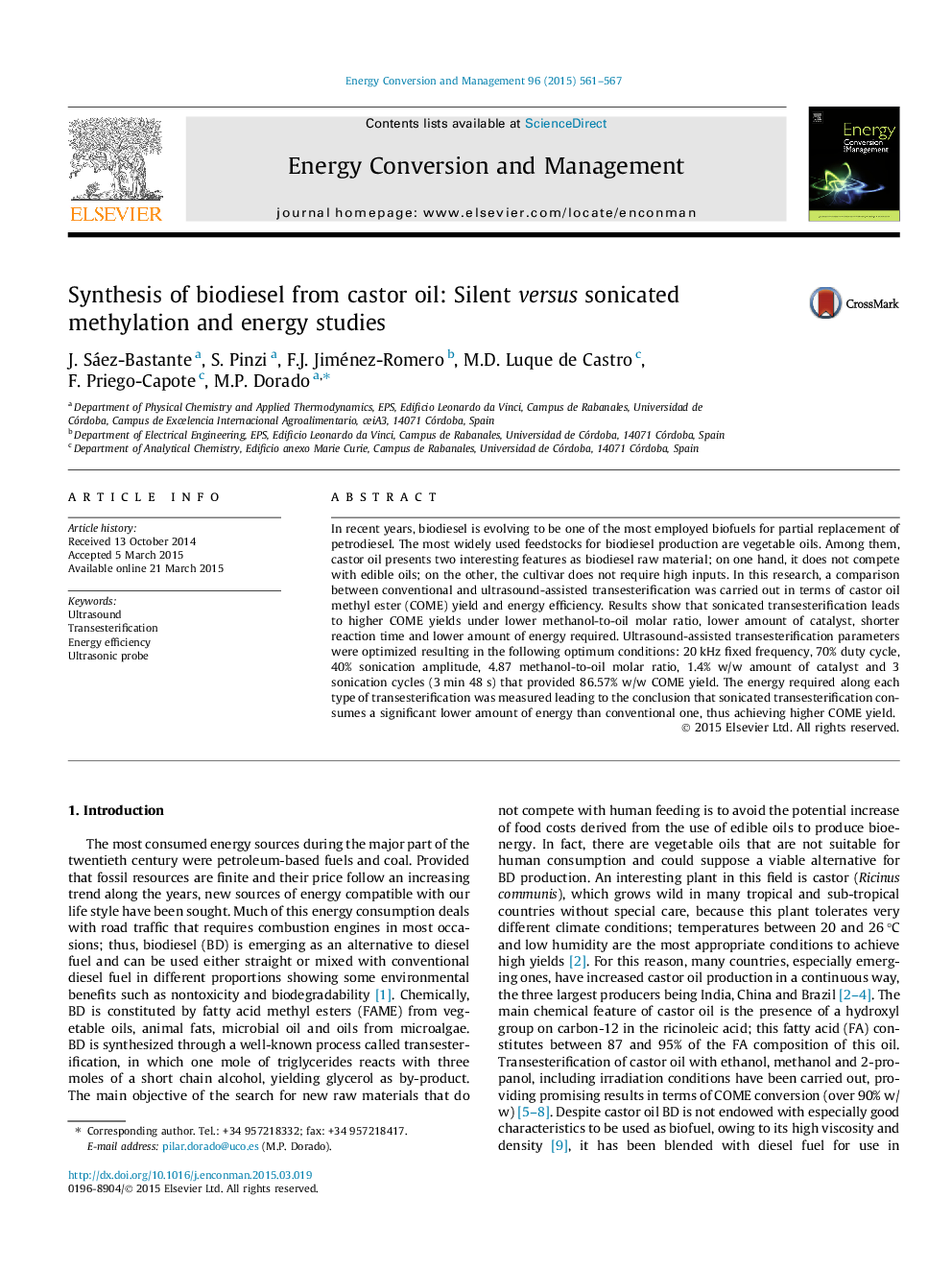| کد مقاله | کد نشریه | سال انتشار | مقاله انگلیسی | نسخه تمام متن |
|---|---|---|---|---|
| 763607 | 1462866 | 2015 | 7 صفحه PDF | دانلود رایگان |
• Sonicated transesterification leads to higher conversion than conventional one.
• Energy consumption required by conventional and ultrasound-assisted transesterification was compared.
• Ultrasound-assisted methylation is more competitive in terms of energy than conventional one.
In recent years, biodiesel is evolving to be one of the most employed biofuels for partial replacement of petrodiesel. The most widely used feedstocks for biodiesel production are vegetable oils. Among them, castor oil presents two interesting features as biodiesel raw material; on one hand, it does not compete with edible oils; on the other, the cultivar does not require high inputs. In this research, a comparison between conventional and ultrasound-assisted transesterification was carried out in terms of castor oil methyl ester (COME) yield and energy efficiency. Results show that sonicated transesterification leads to higher COME yields under lower methanol-to-oil molar ratio, lower amount of catalyst, shorter reaction time and lower amount of energy required. Ultrasound-assisted transesterification parameters were optimized resulting in the following optimum conditions: 20 kHz fixed frequency, 70% duty cycle, 40% sonication amplitude, 4.87 methanol-to-oil molar ratio, 1.4% w/w amount of catalyst and 3 sonication cycles (3 min 48 s) that provided 86.57% w/w COME yield. The energy required along each type of transesterification was measured leading to the conclusion that sonicated transesterification consumes a significant lower amount of energy than conventional one, thus achieving higher COME yield.
Figure optionsDownload as PowerPoint slide
Journal: Energy Conversion and Management - Volume 96, 15 May 2015, Pages 561–567
